Of all types of valves, a brass ball valve is rightly considered the most used for steel and metal-plastic pipes. Although many craftsmen install such valves on PPR polypropylene pipes, knowing that native polypropylene taps are less reliable.
The content of the article:
-
What is
- Ball valve body
- Stem and O-rings
- Performance characteristics
-
Where is used
- Models
- For drinking and industrial water
- For technical fluids
- Why is the brass ball valve so widespread?
- How to install at home
- What you need to consider when buying
What is
In appearance, the valve looks like a metal cylinder or barrel with a twist handle on the side surface. The ends are threaded internally or externally. In the open state, in the open state, the insides of the valve look like a regular pipe, without ledges or transitions. Therefore, the device is correctly called a full bore brass ball valve.

Structurally, a ball valve consists of four elements:
- brass body with or without protective coating;
- a metal ball is installed inside the body on a movable rod-axis;
- the ball element is sealed on both sides with sealing ring washers made of fluoroplastic.
- rotary handle.
Depending on the purpose, the handle on the stem of the ball element can be symmetrical (“butterfly” scheme). Blue for cold drinking water. Red is for hot. Other colors - black, green and white - are for technical fluids.
If the torque to open the ball element is more than 2 N * m, then instead of the "butterfly" on brass faucet is fitted with one-way aluminum handle in a polymeric cover corresponding to colors. The rotary knob is secured to the ball stem with a hex nut.
Thread markings in inches are applied to the side of the brass valve body. All other information - the trade mark and the direction of rotation of the handle for closing and opening the ball valve are applied to the polymer coating of the handle.
Ball valve body
The brass body can be nickel-coated or used without it. In the latter case, the faucet is made of brass alloy of the LS59 brand, it is easy to distinguish it by its darker yellow shade. In this case, the ball element is made of alloy steel, and the O-rings are made of fluoroplastic.
Most of the imported high quality full bore valves are stamped according to the EU standard EN12165 from CW617N brass alloy. The new technology makes it possible to obtain housings with a smaller wall thickness, but the corrosion resistance is somewhat reduced.
Therefore, a nickel plating is used to protect the brass surface. In this case, the thread and the rim above the threaded section are left without nickel. This helps not to confuse the brass faucet with models made of zinc-aluminum alloy TsAM or industrial valves made of stainless steel AISI 316 (08X17H14M3).
Stem and O-rings
The durability of a full bore valve depends on the arrangement of the spindle-stem of the ball element. The ball itself can be made of alloy steel if the ball valve is to be used for pumping hot water or corrosive liquids. More often, full bore brass body models use chrome-plated mild steel balls.
The ball element can mate with the stem in a fixed or slide fit. The second option is considered more preferable, since in this case the forces when the handle is turned are not transmitted to the ball and soft fluoroplastic sealing rings.
High quality brass valves use an additional seal and a lock nut on the stem. The ball valve with stem clamping serves 2-3 times longer without leaks than conventional models.
O-rings are made of fluoroplastic or its imported analog - PTFE polymer. For larger thread sizes up to 2 ”, Teflon with antifriction additives can be used.
Performance characteristics
A standard brass ball valve made of L59 alloy is designed for an operating pressure of 25-30 At. ½ ”-2” branded models with a special stem seal and reinforced body can withstand pressures up to 100 bar. In this case, the temperature of the pumped-over liquid should not exceed 40 OWITH.
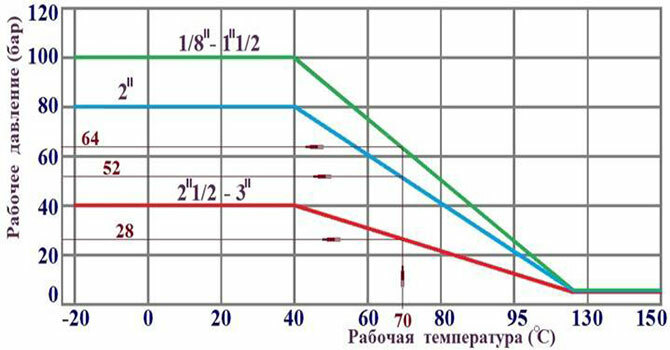
With an increase in the diameter, the maximum pressure decreases to 40 At. The brass ball valve for hot water is capable of withstanding no more than 6 At. The reason for the decrease in performance is the weak mechanical resistance of PTFE rings to high temperatures.
Where is used
The main field in which rotary ball valve valves are used is in the cold feed and hot water in domestic water supply networks, heating systems, irrigation, pumping technical fluids.
Models
The most common is considered to be a coupling brass ball valve. It can be easily distinguished by the design of the case. The inlet or outlet has an external thread for connecting a pipe using a coupling.

In addition to the coupling scheme, the body can have a mutual internal thread for squeegees, or for "American".
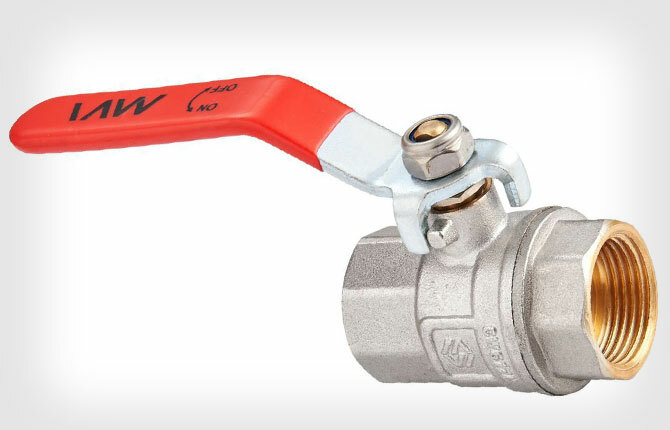
Since the ball valve is actively used to enter the water supply into the apartment, the usual coupling version is often replaced by a model with a built-in filter.
There are also models with a shut-off valve for raising water from a well, with a collapsible body. In the latter case, an expensive product can be repaired by replacing the ball or O-rings with new parts.
For drinking and industrial water
The standard sleeve model is suitable for connecting domestic water pipes to a riser. Firstly, a compact body without protruding parts, as, for example, an old cast iron or bronze water valve. Secondly, you can use a model with a built-in coarse filter.
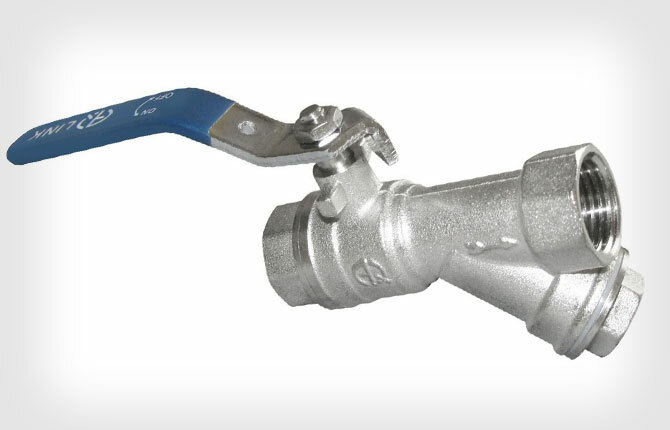
With the help of a ball valve, the following are connected:
- plumbing outlets - a compact cistern, a mixer on a kitchen sink, in a bathroom shower;
- heating system on metal-plastic pipes.
In this case, it will be necessary to select a model with a thread for the connecting fittings. Before buying a ball valve, you will need to familiarize yourself with the markings applied to the cylindrical belt.
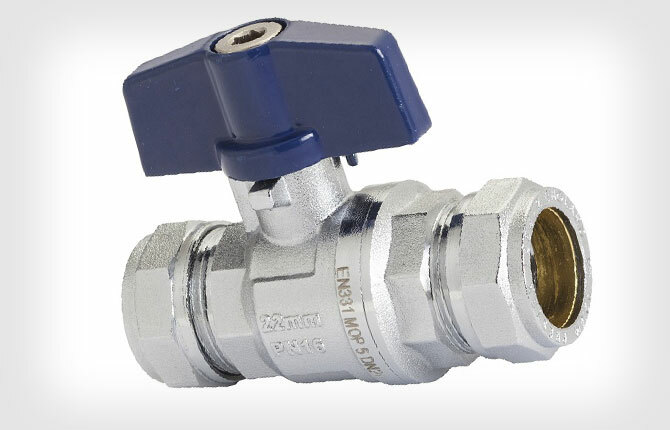
In addition to the pipe size and working pressure, the model will be "registered" in the marking. This will allow you to check the manufacturer's catalog of the possibility of using a ball valve for hot water.
For technical fluids
The ball valve is also used for pumping corrosive media. They are installed on drainage pumps for pumping groundwater, in plant spraying systems, in food pipelines for juice, tinctures or decoctions.
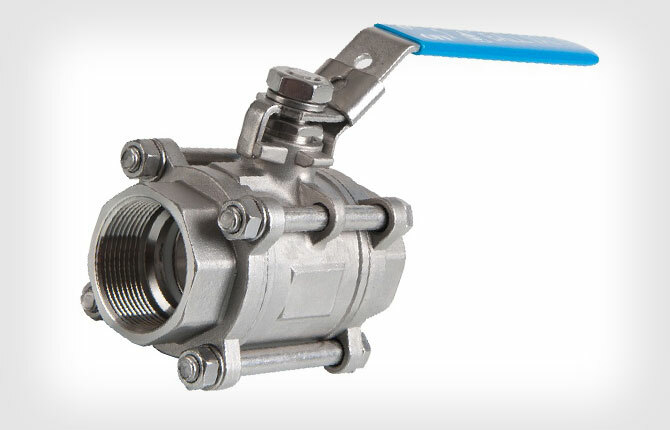
The body of such a valve is usually made of brass alloys with a double galvanized zinc and nickel coating. The threaded sections of the valve are attached to the block with a ball in a flange manner with an additional seal with a sealant. As a result, the ball valve turns out to be collapsible with the possibility of replacing the inlet for the fitting with a coupling.
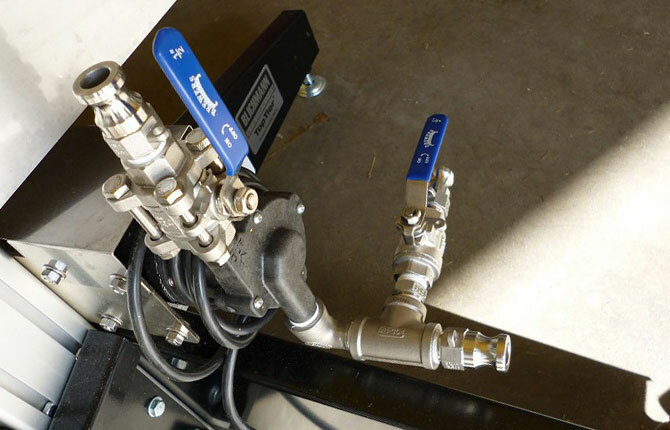
Why is the brass ball valve so widespread?
The ball valve has practically supplanted the previously widely used valves and plug plug valves. Despite the fact that in the last two varieties, brass and stocks were also used. A brass faucet with a steel ball turned out to be simple and inexpensive, available for do-it-yourself installation, requiring no maintenance and repair.
The main advantage is that, at a low cost, the full bore valve provides minimal hydraulic resistance to the fluid flow. For low-pressure water pipes, for example, in the heating circuit, in irrigation systems, in hydroponics, the absence of losses is a decisive factor when setting the water flow.
The cost of the ball valve was found to be low in order to abandon attempts to replace the most wearing part - fluoroplastic rings. On the other hand, the use of a coarse filter retains more than 90% of all microparticles and abrasive suspensions. Therefore, with proper installation and regular purging of the filter element, a brass ball valve can serve no less than a traditional water valve.
How to install at home
The easiest way is to put a tap during the plumbing assembly process. You can use any model you like with an external or internal thread. It is best to choose an option with an external and internal thread. Put it with an internal thread in front.
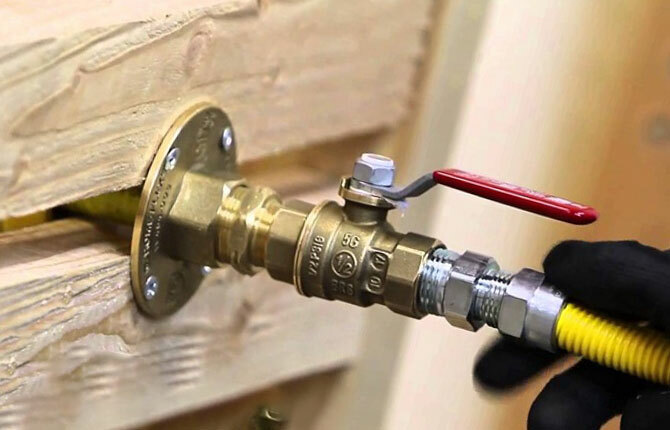
For installation, screw a brass lock nut onto the pipe. A sealing tape or tow is wound along the external thread of the pipe, after which the tap is turned with a wrench, grabbing the part by the hexagon on the brass body.
On the opposite side, screw on the coupling with a squeegee. Wrap the body with a clean rag, lay FUM tape along the thread. Grab the body with one hand and screw the sleeve with the other. After the first two turns have been captured, you can continue screwing the coupling with a coccygeal wrench.
They act in the same way if the ball valve needs to be cut into the gap between two pipes with finished threads. The only difference is in the coupling - in this case, you need to use a part with left and right internal threads on opposite ends.
Which taps do you prefer to use in the water supply system?
With external thread.
0%
With internal thread.
0%
With external and internal threads.
0%
I do not install the cranes myself.
0%
Voted: 0
What you need to consider when buying
The best solution is to buy a ball valve of a well-known brand, for example, "VALTEC". It is necessary to clarify for which water this model is suitable. Most of the brass alloys used contain lead, most commonly CW617N.
According to EN 12165, the lead content should not exceed 2%. In the brass alloy CW617N, as in its domestic analogue LS59, the content ranges from 1.5 to 2.5%. Therefore, in the case of plans to use a ball valve for drinking water, the lead content must be specified in a passport or certificate.
| Alloy grade | Content Cu,% |
Content Sn,% |
Content Fe,% |
Content Al,% |
Content Pb,% |
Content Ni,% |
Content Zn |
| CW627N | 57-59 | 0,3 | 0,3 | 0,05 | 1,6-2,6 | 0,3 | rest |
| LS59-2 | 57-59 | 0,3 | 0,4 | 0,1 | 1,5-2,5 | 0,4 | rest |
| CW614N | 57-59 | 0,3 | 0,3 | 0,05 | 2,6-3,5 | 0,3 | rest |
| LS58-3 | 57-59 | 0,4 | 0,4 | 0,1 | 2,5-3,5 | 0,5 | rest |
For service water, valves made of brass alloys CW614N are used. Such a ball valve can be used to connect plumbing fixtures or discharge wastewater.
Another nuance, a nickel-plated brass ball valve can be easily confused in appearance with a similar product, but not brass, but from ZAM. You can distinguish a zinc-aluminum body from a brass body by weight. Brass has a density of 8.4-8.6 g / cm3, TsAM - 6.7 g / cm3. In addition, the ZAM is much softer, so it is easily scratched.
The brass ball valve is much more convenient to operate than the ordinary water valve. The device is maintenance-free and easy to install with your own hands. But there are still problems.
Ball valve: video.
Share your practical experience in installing or maintaining brass ball valves in the comments. What problems did you encounter? Should I use it in the household? Save the article to bookmarks, share it on social networks.


